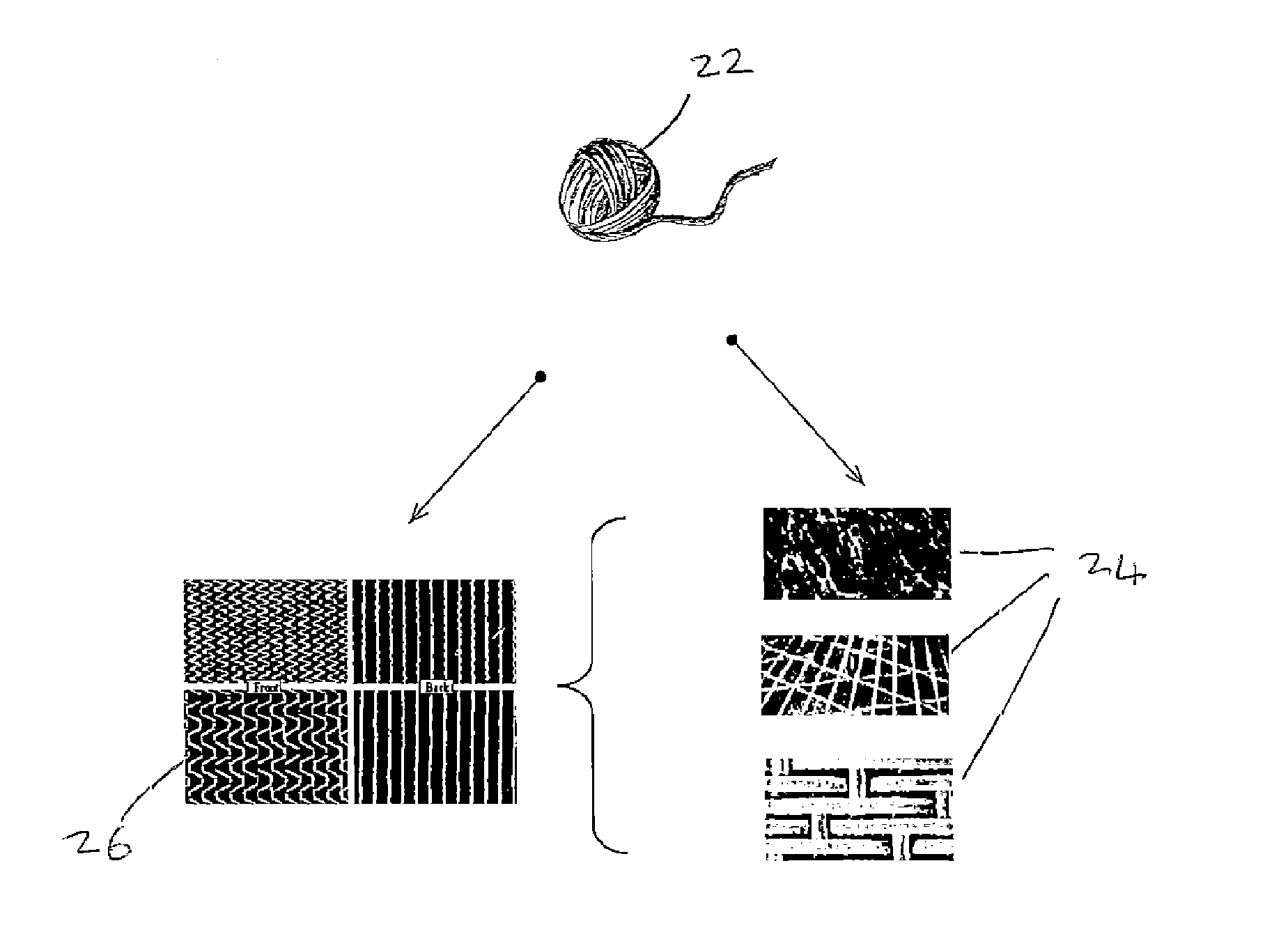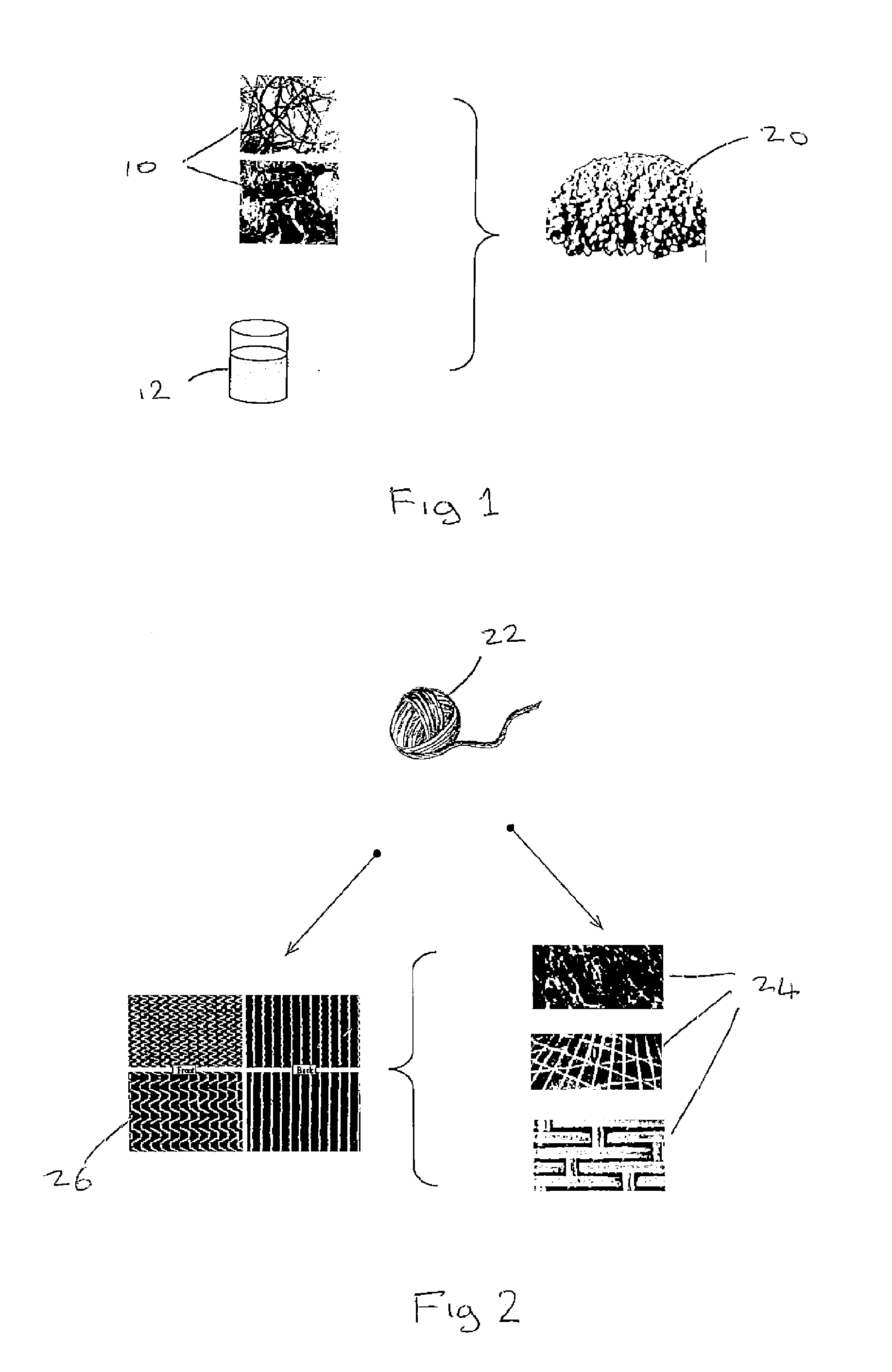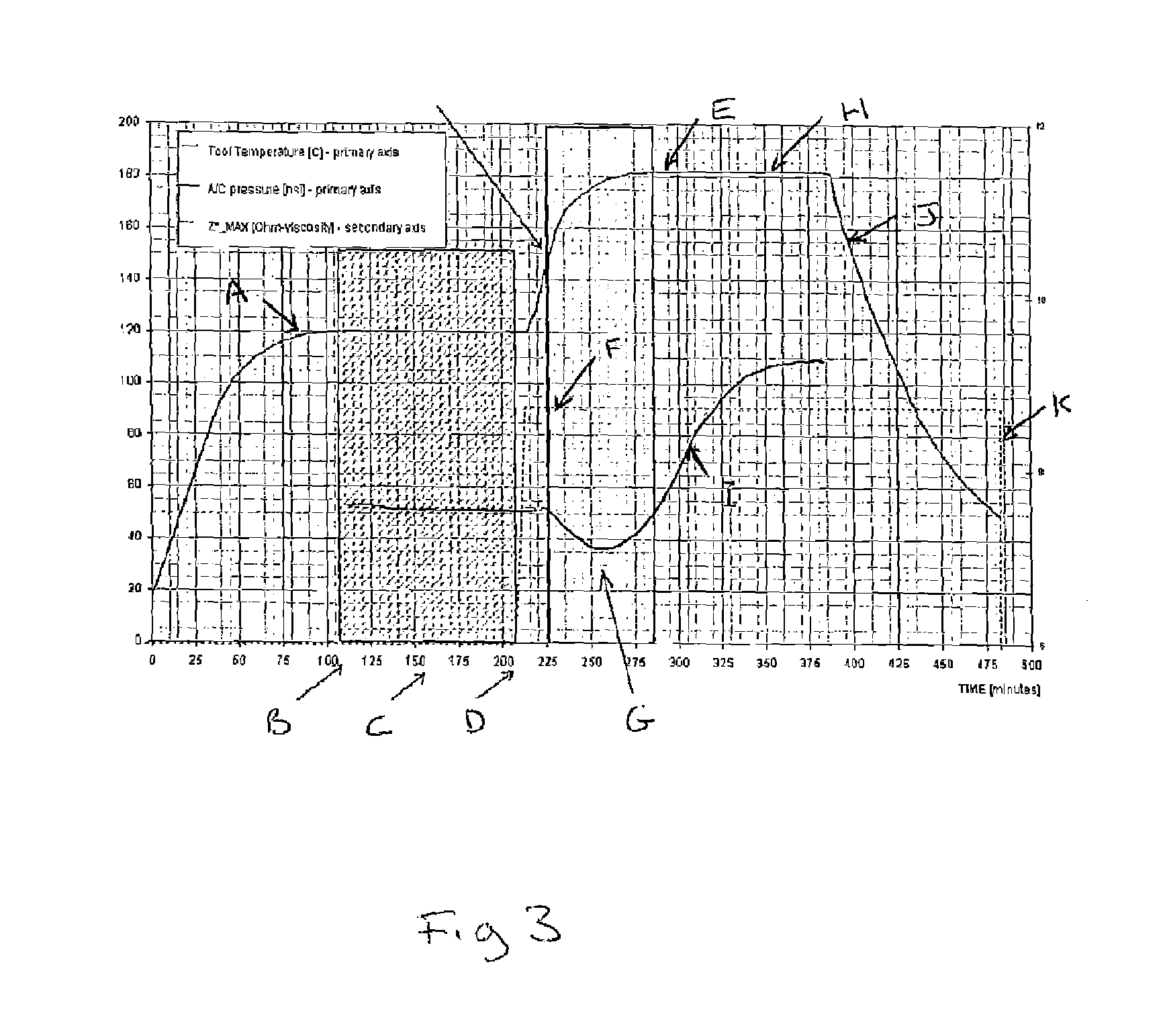Method of forming a composite material with added nanoparticles and carrier material containing nanoparticles
a composite material and carrier material technology, applied in the field of composite materials forming with added nanoparticles and carrier materials containing nanoparticles, can solve the problems of affecting all electrical related functions, affecting the possibility of a complete infusion, and reducing electrical and thermal conductivity
- Summary
- Abstract
- Description
- Claims
- Application Information
AI Technical Summary
Benefits of technology
Problems solved by technology
Method used
Image
Examples
Embodiment Construction
[0051]FIG. 1 shows the method step of dispersing nanoparticles 10 within a carrier material 12 to form a mix 20. The carrier material 12 can be a thermoplastic material such as CoPolyamide CoPa 140, TPE-E thermoplastic polyester elastomers, Surlin Ionomeric Polymers, Polyoxymethylene (POM) or others which have a melting temperature greater than 120° C. The nanoparticles 10 are mixed into the carrier material 12 while the carrier material 12 is in a loose particulate form. As shown in FIG. 5, the nanoparticles 10 can be arranged to be dissolved within the carrier material 12. Alternatively the nanoparticles 10 can adhere to an outer surface of particles of the carrier material 12, using the potential of some fabric material to attract or incorporate functionalized nanoparticles. The mix 20 is subsequently spun into a thread 22 (shown in FIG. 2).
[0052]A nanoparticle 10 such as a multi-walled carbon nanotube (MW CNT) is used which has the minimum level of electrical percolation thresho...
PUM
| Property | Measurement | Unit |
|---|---|---|
| temperature | aaaaa | aaaaa |
| temperature | aaaaa | aaaaa |
| temperature | aaaaa | aaaaa |
Abstract
Description
Claims
Application Information
 Login to View More
Login to View More - R&D
- Intellectual Property
- Life Sciences
- Materials
- Tech Scout
- Unparalleled Data Quality
- Higher Quality Content
- 60% Fewer Hallucinations
Browse by: Latest US Patents, China's latest patents, Technical Efficacy Thesaurus, Application Domain, Technology Topic, Popular Technical Reports.
© 2025 PatSnap. All rights reserved.Legal|Privacy policy|Modern Slavery Act Transparency Statement|Sitemap|About US| Contact US: help@patsnap.com



